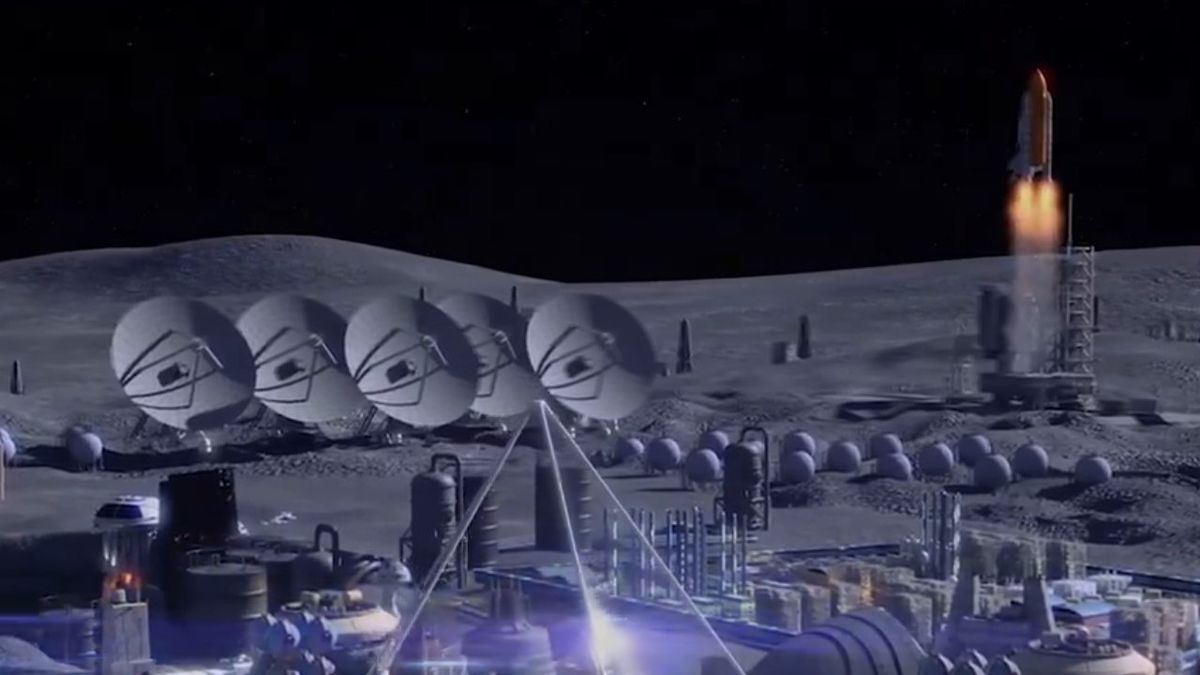NASA’s Perseverance rover captures striking images of a large crater on Mars from a steep slope (video, photos).

NASA’s Perseverance rover gets stunning view of big Mars crater from slippery slope (video, photos) (Image Credit: Space.com)
NASA’s Perseverance rover took a break from its Mars mountaineering expedition recently to survey its old stomping grounds.
The car-sized Perseverance landed on the floor of the 28-mile-wide (45-kilometer-wide) Jezero Crater in February 2021 to hunt for signs of past Mars life and collect dozens of samples for future return to Earth.
Perseverance has finished its work in Jezero’s flats and is now scaling the crater’s western rim, on its way to explore new and disparate Mars landscapes. Late last month, however, the rover paused to take in the grand Jezero view — and to share that vista with its handlers on Earth.

Mission team members stitched together 44 photos that Perseverance snapped on Sept. 27, creating a mosaic that features many of the landmarks the rover has explored.
“The image not only shows our past and present, but also shows the biggest challenge to getting where we want to be in the future,” Perseverance’s deputy project manager, Rick Welch of NASA’s Jet Propulsion Laboratory (JPL) in Southern California, said in a statement on Monday (Oct. 28), when NASA shared the new imagery.
“If you look at the right side of the mosaic, you begin to get an idea what we’re dealing with,” he added. “Mars didn’t want to make it easy for anyone to get to the top of this ridge.”
Perseverance began the climb in mid-August. It took the featured photos when it was about halfway up the western rim, near a spot the mission team calls “Faraway Rock.” The rover isn’t expected to crest the rim until early December, however, because the going is pretty tough.
The ridge that Welch referenced has a slope of about 20 degrees, NASA officials said. It’s also slippery, featuring loose sand and dust atop a brittle crust.

“Mars rovers have driven over steeper terrain, and they’ve driven over more slippery terrain, but this is the first time one had to handle both — and on this scale,” Camden Miller of JPL, a planner, or “driver,” for Perseverance’s mission, said in the same statement.
“For every two steps forward Perseverance takes, we were taking at least one step back,” added Miller, who also served as a driver for NASA’s Curiosity rover, which landed inside Mars’ Gale Crater in 2012 and is still going strong. “The rover planners saw this was trending toward a long, hard slog, so we got together to think up some options.”

Those options included driving the six-wheeled Perseverance backwards, taking a switchback-heavy “cross-slope” approach, and staying close to the slope’s northern edges, which may have more large, traction-enhancing rocks buried in the near subsurface.
All three of these strategies have helped to some extent, but the northern-edge method appears to provide the most bang for the buck, so the rover team is going to prioritize that one.
“That’s the plan right now, but we may have to change things up the road,” Miller said. “No Mars rover mission has tried to climb up a mountain this big this fast. The science team wants to get to the top of the crater rim as soon as possible because of the scientific opportunities up there. It’s up to us rover planners to figure out a way to get them there.”







